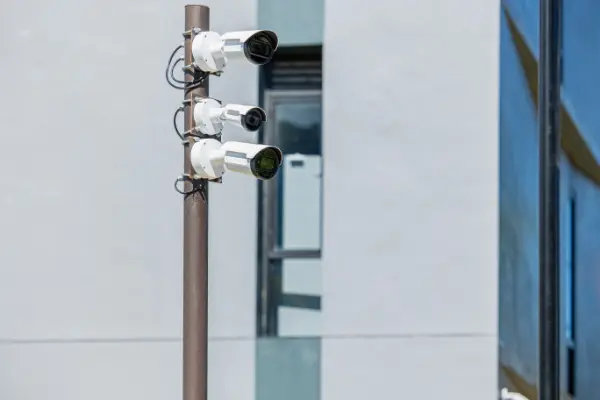The concept of physical security has greatly evolved over the years, especially in the face of technological advancements and the rise of the digital world. In the past, physical security primarily involved the use of locks, keys, and security guards to protect assets and personnel. However, with the advent of digital technology, the landscape of physical security has transformed, giving rise to new and innovative approaches to safeguarding people and property. In this article, we will examine the evolution of physical security in a digital world, and the impact it has had on the industry.
Integration of Physical and Digital Security Systems
One of the most significant developments in physical security is the integration of traditional security measures with digital technologies. This convergence has allowed for more comprehensive and efficient security solutions that encompass both physical and digital aspects. For example, the use of access control systems, surveillance cameras, and alarm systems, which were once standalone technologies, are now seamlessly integrated with digital platforms to create a more robust security infrastructure. This integration has not only improved the effectiveness of security measures but has also streamlined operational processes, making it easier for security personnel to monitor and manage security systems.
The Role of Data and Analytics in Physical Security
Data and analytics have also played a crucial role in shaping the evolution of physical security. With the proliferation of connected devices and sensors, security systems are now able to gather and analyze vast amounts of data in real-time. This data can provide valuable insights into security threats, patterns, and trends, enabling security personnel to make more informed decisions and respond proactively to potential risks. Moreover, the use of predictive analytics has allowed for the anticipation of security breaches and the implementation of preemptive measures, further enhancing the efficacy of physical security protocols.
Emergence of Cybersecurity in Physical Security
As physical security systems become increasingly interconnected and reliant on digital technologies, the issue of cybersecurity has become a paramount concern. The integration of physical and digital security has opened up new vulnerabilities in security infrastructure, making it susceptible to cyber attacks and digital threats. As a result, the convergence of cybersecurity and physical security has become a focal point for security professionals. The implementation of robust cybersecurity measures to protect physical security systems from unauthorized access, data breaches, and cyber threats has become imperative in ensuring the integrity and reliability of security protocols.
The Impact of Artificial Intelligence on Physical Security
Artificial intelligence (AI) has also made a significant impact on the evolution of physical security. AI-powered technologies such as facial recognition, behavior analysis, and predictive modeling have revolutionized the way security systems operate. These advanced capabilities enable security systems to not only identify and respond to security threats in real-time but also to adapt and learn from evolving security challenges. AI has empowered security personnel to be more proactive and effective in mitigating security risks, while also reducing the margin for human error.
The Role of Cloud-Based Security Solutions
Cloud-based security solutions have become a game-changer in the realm of physical security. These platforms offer a host of benefits, including remote accessibility, scalability, and enhanced data storage capabilities. Cloud-based security solutions provide the flexibility for security personnel to monitor and manage security systems from anywhere, at any time, using a variety of devices. Additionally, the scalability of cloud-based solutions allows for the seamless expansion of security infrastructure as organizational needs grow. The use of cloud-based security solutions has not only enhanced the efficiency of physical security operations but has also reduced the costs associated with traditional on-premise security systems.
The Future of Physical Security in a Digital World
As technology continues to advance at a rapid pace, the future of physical security in a digital world is poised for further evolution. The integration of emerging technologies such as the Internet of Things (IoT), machine learning, and automation will continue to shape the landscape of physical security. The use of interconnected devices and systems will result in a more interconnected and intelligent security ecosystem, capable of providing more comprehensive and proactive security measures. Moreover, the convergence of physical and digital security will give rise to new opportunities for innovation and efficiency in safeguarding people and property.
In conclusion, the evolution of physical security in a digital world has led to transformative changes in the way security is approached and managed. The integration of physical and digital security systems, the role of data and analytics, the emergence of cybersecurity, the impact of artificial intelligence, and the use of cloud-based security solutions have all contributed to a more robust and sophisticated approach to physical security. As we look to the future, the continued advancement of technology will undoubtedly shape the evolution of physical security, paving the way for more effective, intelligent, and adaptive security solutions.














